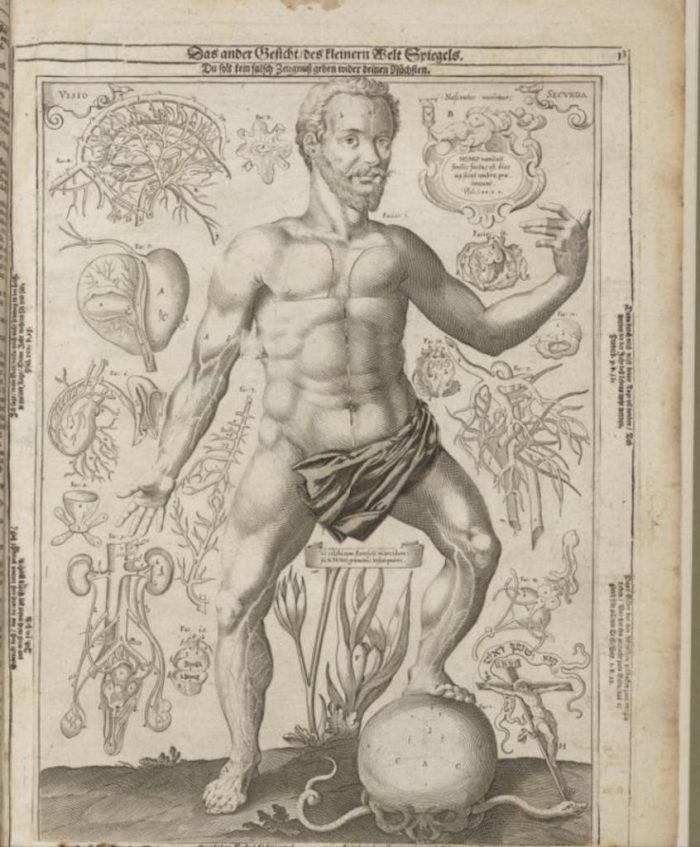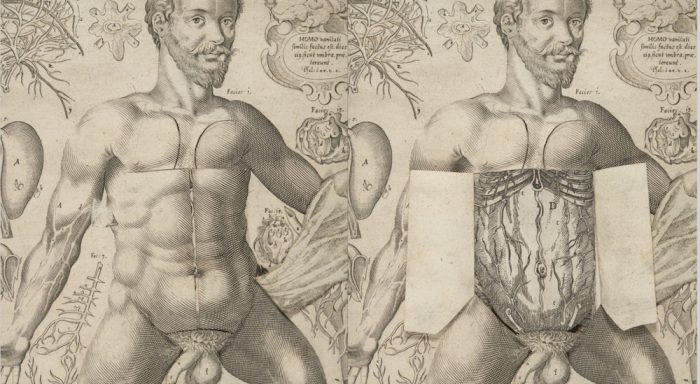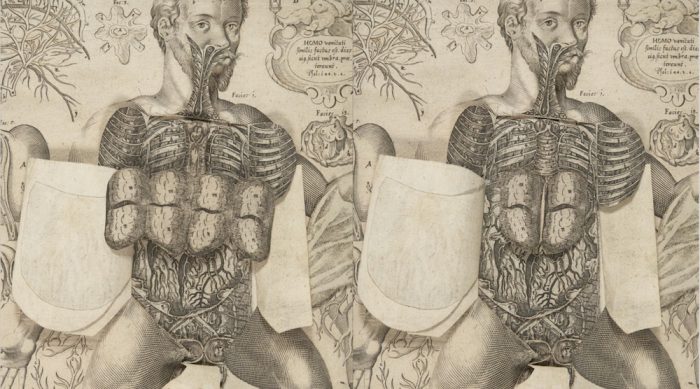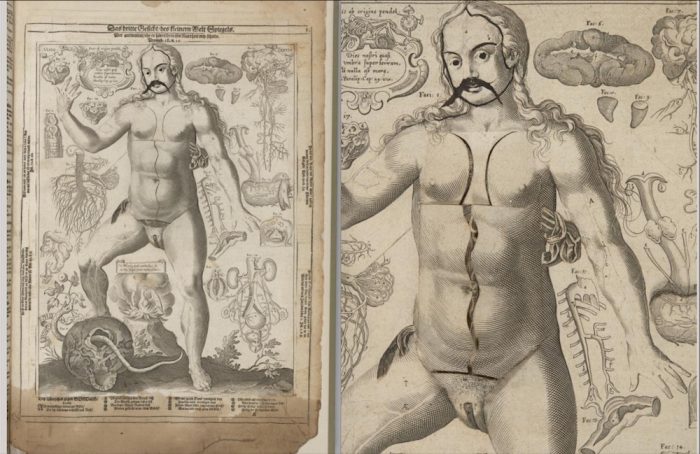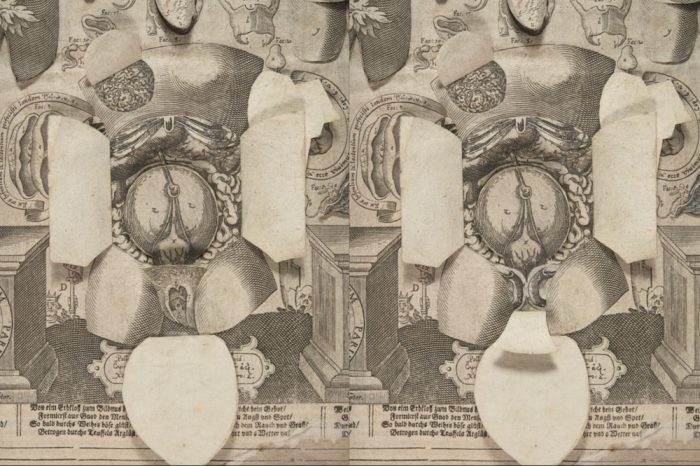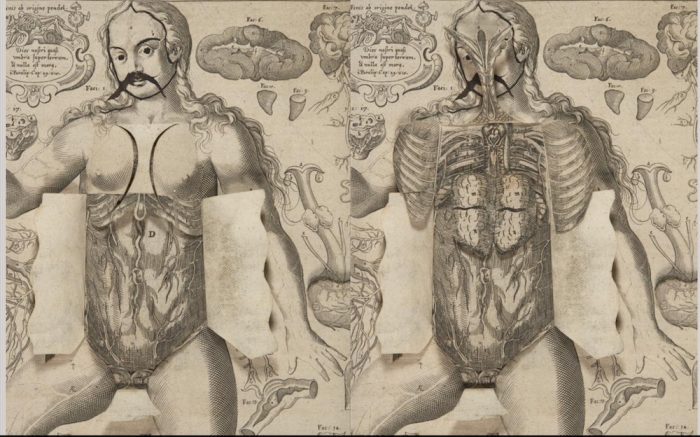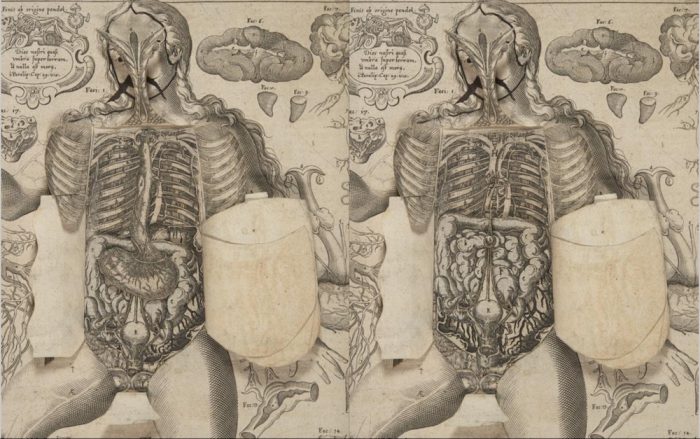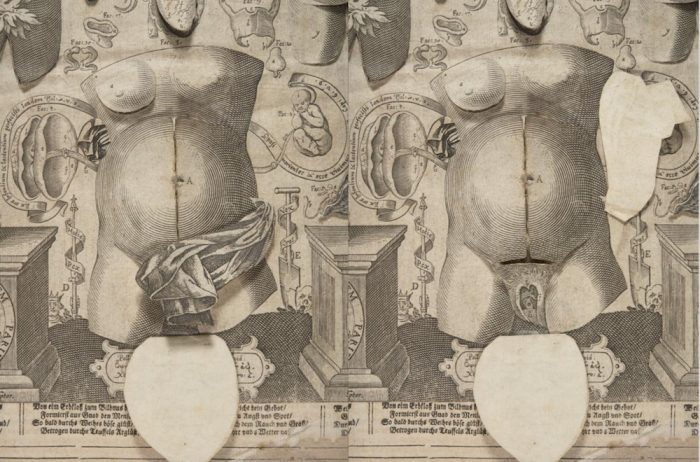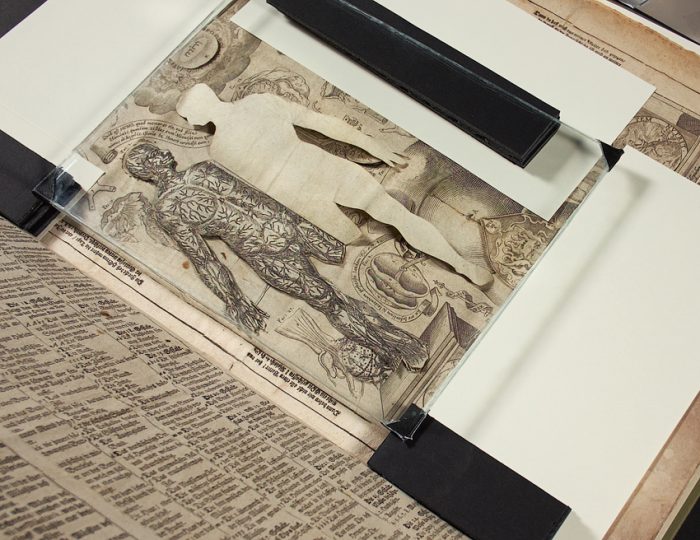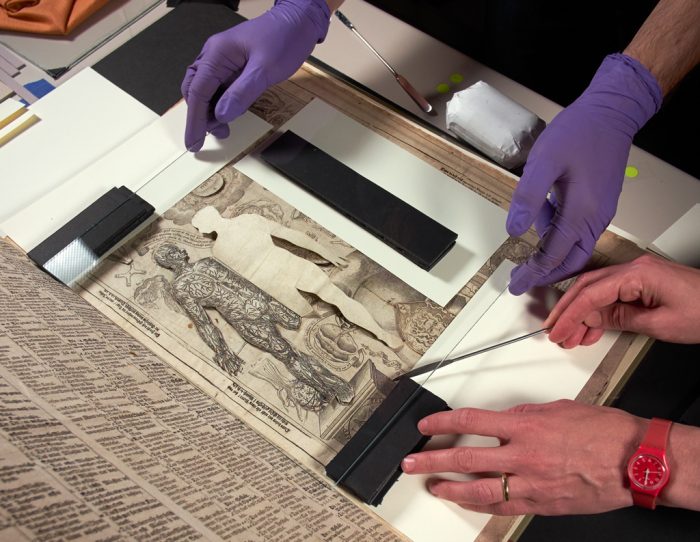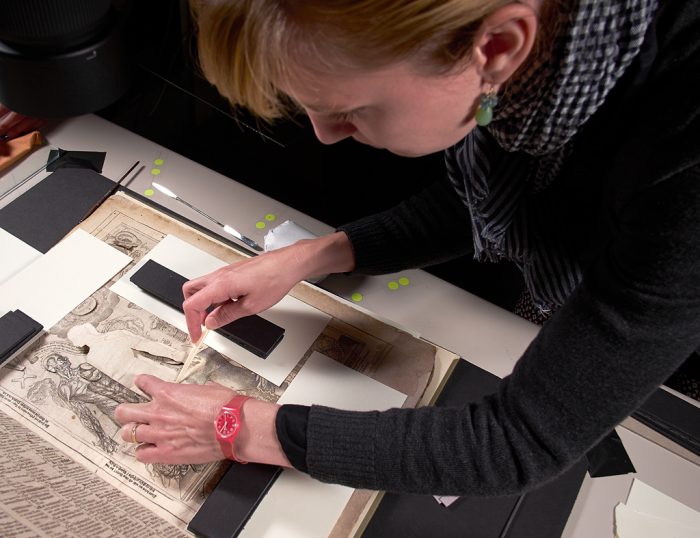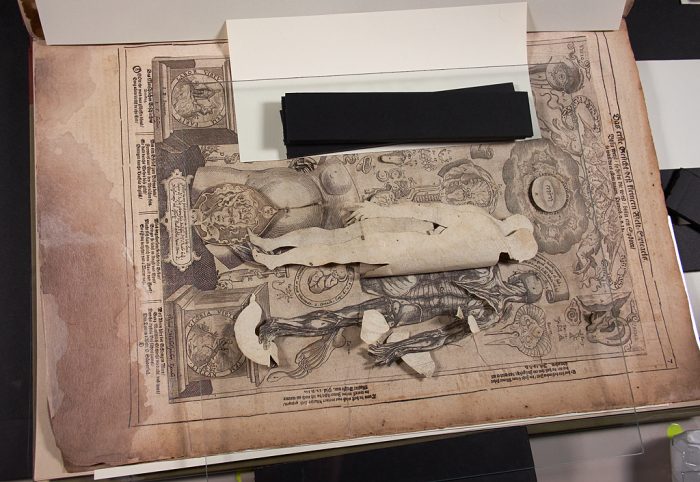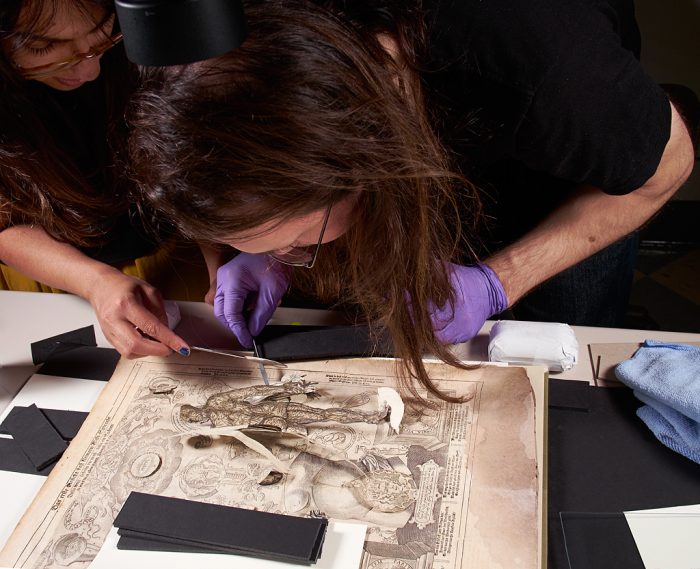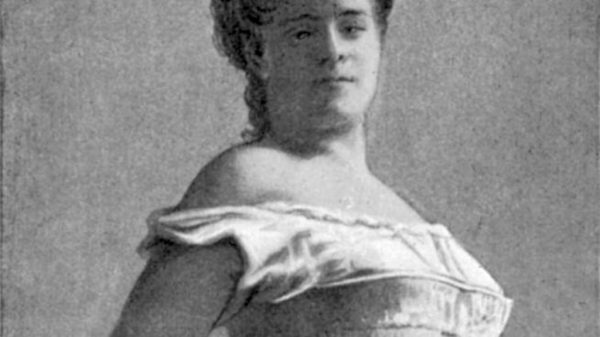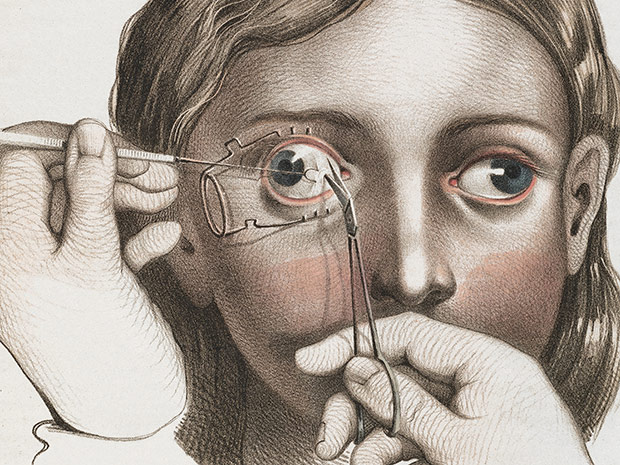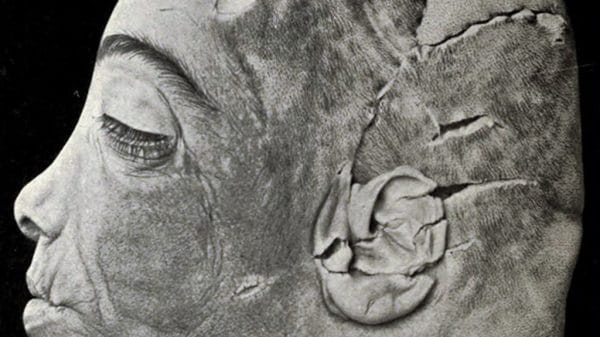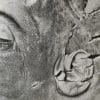My favorite books as a kid for were always Pop Up Books. So when I saw the 1661 pop-up book of medical illustrations entitled Kleiner welt Spiegel, das ist, Abbildung Göttlicher Schöpffung an dess Menschen Leib: mit beygesetzer Schrifftlicher Erklärung (Ulm, 1661), a German translation of Johann Remmelin’s Catoptrum Microcosmicum originally published in Latin in 1613, I had to share it with you. When I look at this book, not only do I see science, I also see a work of art. Check out this in-depth feature over at the Columbia University Medical Center that breaks down the story of this book. In the meantime, peep these unreal pages from this book below…
Archives & Special Collections at Columbia University’s Augustus C. Long Health Sciences Library is pleased to announce the digitization of an important anatomical flap book – an early attempt to represent the three dimensionality of the human body in the two dimensional format of the book.
Kleiner welt Spiegel, das ist, Abbildung Göttlicher Schöpffung an dess Menschen Leib: mit beygesetzer Schrifftlicher Erklärung (Ulm, 1661) is a German translation of Johann Remmelin’s Catoptrum Microcosmicum originally published in Latin in 1613. Remmelin (1583-1632) designed male and female paper figures using a series of overlapping flaps to illustrate the successive layers of the human body. Intended more for the curious layperson than the medical student or physician, Remmelin’s work was a popular science best-seller of its day. It was reprinted numerous times throughout the 17th and 18th centuries and translated into Dutch, French, and German.
The three plates show a man and woman together along with the abdomen of a pregnant woman; a man alone; and a female alone. There are almost 120 flaps in total. Though this is a later edition, the plates appear to be identical with those in the first edition of 1619.
